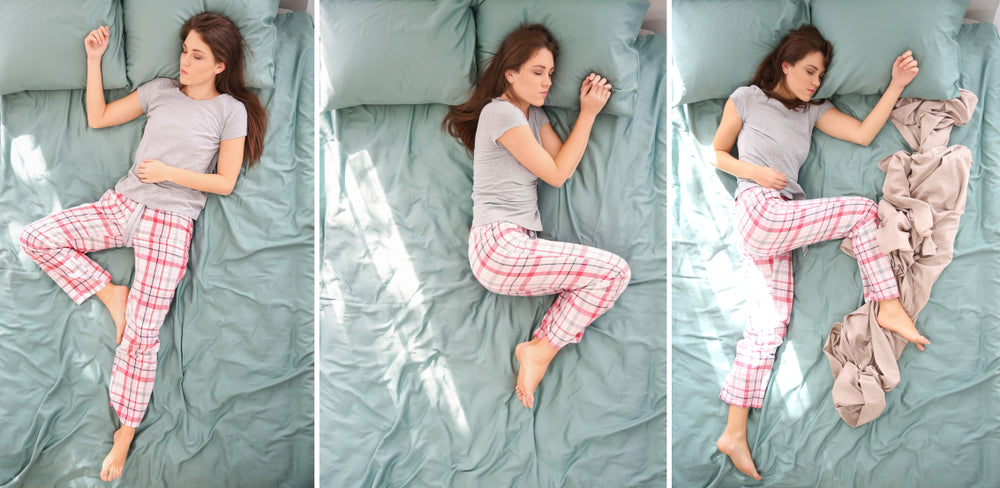Free U.S. Shipping On Orders Over $150

Why Good Skincare Starts on Your Bed
Posted on
What comes to mind when you think about skincare? Most people automatically think about skin care products — moisturizers, creams, cleansers and so on. While these are necessary, we often forget the basic and important foundations of a healthy skin. Things like hydration, a good diet and quality sleep.
Talking of sleep, your bed is more important than you think for your skin health. In fact I would go as far as saying good skincare starts on your bed. This post gives three reasons why your bed is a crucial part of your skincare.
How Much You Sleep
Quality sleep is one of the most understated aspects of healthy beautiful skin. It’s so important that many of us have to use makeup to hide the effects of just one night of terrible sleep. Now imagine what night after night of poor sleep does.
Sleep is extremely important for various body processes like cell regeneration, healing and the release of important hormones like growth hormone.
If you don't get enough sleep, your skin doesn't recover as quickly from damage and injury, it ages faster, it gets looser and gets more wrinkles (that’s because sleep is important for maintaining skin collagen) and it gets dull because of poor blood flow.
Poor sleep also causes increased inflammation (which can cause acne and other problems), reduces blood flow to the skin (which interferes with healing, regeneration and other skin processes), and affects the skin barrier function, leaving your skin more susceptible to damage.
Take sleep as seriously, more seriously even, then your daily skin routine. In addition to diet, exercise and a low-pollution environment, getting 7-9 hours of deep sleep each night is the best anti-aging medicine.
How Clean Your Bedding Is
We’ve talked before about the dangers of dirty bedding. In addition to nasty infections like UTI, unhygienic bedding is also terrible for your skin.
Your bedsheets, duvet, mattress and pillow accumulate lots of dirt and gunk. Sweat, dead skin cells, dust, pet dander, pollen, mold and even fecal matter. All these create the perfect environment for bacteria and fungi to grow.
When you sleep, all this stuff transfers from the bed and onto your skin, causing a host of skin problems like eczema, dermatitis and acne (cystic acne, which occurs when bacteria enters skin pores, is especially painful).
You could be doing everything to improve your skin, but if you sleep on dirty bedding, it cancels out most of your efforts.
Some tips for a cleaner bed include washing your bedsheets, pillowcase and duvet cover at least once a week, using a mattress protector to keep your mattress clean and making sure you are clean before getting into bed.
If you are prone to acne and other skin issues, you’ll have to be even more rigorous about bed hygiene. Wash your bedding more often and consider using antibacterial bedding like the Hercleon Jax sheets that actively fight acne-causing bacteria.
What Kind of Bedding You Use
Still on the issue of bedding, the type of bedding you use also matters when it comes to skin health.
Some types of linen, such as those made from polyester, have poor breathability and can leave your skin clammy with sweat. This increases the risk of acne and affects bed hygiene.
Some fabrics like cotton also tend to absorb too much moisture and oil from your skin, leaving your skin dry. That’s why we don't recommend cotton pillowcases. Instead, mulberry silk pillowcases are the best for good skin.
For sheets and other bed linen, cotton, linen, silk, bamboo and other natural materials are good for your skin. They absorb sweat, let your skin breathe and are less friendly to bacteria.
Bonus Tip: Sleep On Your Back
Yes, your sleep position affects your skin. Sleeping on your side or stomach keeps your face in contact with your pillow. This has three problems.
One, the constant pressure on your skin is bad as it reduces blood flow. Two, friction with the pillowcase can cause fine lines, wrinkles and acne mechanica (friction acne). Three, the part of your face in contact with the pillowcase gets drier, which can leave it looking duller and more aged.
The best sleeping position for your skin is on your back. If you find it hard to transition to sleeping on your back, use a body pillow or a regular pillow placed on your side to prevent yourself from rolling onto your side during sleep.
Quick links
Contact
6063 Hudson Road #160
Woodbury, MN 55125
Yo@hercLeon.com
Leave a comment: